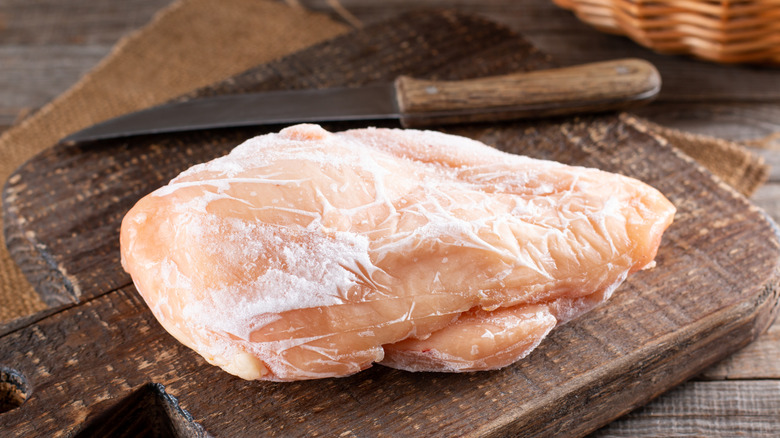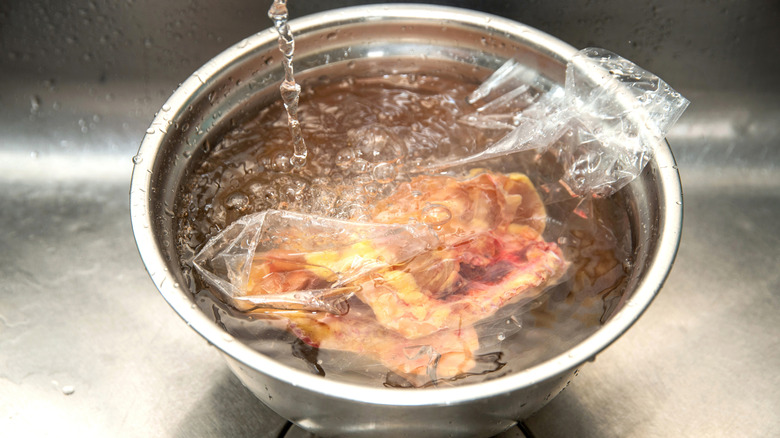The Dangerous Mistake People Make When Defrosting Chicken
When you need to defrost chicken, it can be tempting to pick quick and easy methods. Leaving it out on the counter is certainly faster and more convenient than remembering to transfer it to the fridge the night before, but that doesn't necessarily mean it's safe.
While a mistake everyone makes with raw meat is failing to store it at a food-safe temperature, thawing chicken at room temperature is particularly dangerous. Raw chicken should never reach above 40 degrees Fahrenheit unless it's in the process of cooking to 165 degrees Fahrenheit, the recommended temperature to kill bacteria and parasites. If it spends more than two hours outside of a 40-degree Fahrenheit environment, you run the risk of bacteria multiplying and contaminating your food. Even if you cook it to the recommended temperature, there may still be a risk of bad taste or unappealing texture.
Keep in mind that chicken doesn't thaw uniformly. The exterior thaws first and invariably reaches a higher temperature than the still-frozen interior, so it could develop more bacteria before the center even defrosts. Plus, there's always a risk of cross-contamination when you leave raw meat on the counter. While your chicken thaws, it could potentially leave bacteria on your kitchen's surfaces — or even your food if it comes into contact with it. While the safest way to thaw meat is to leave it in the fridge until it's ready, there are other ways to defrost chicken when you're in a bit of a hurry.
How to thaw frozen chicken
Just about every cook has forgotten to thaw their chicken ahead of time and now faces a dilemma: Do you cook it as is, or reach for a faster thawing method? Preparing frozen chicken without thawing typically means your cooking times will be about 50% longer, but it's really only effective when used in soups or cooked in an Instant Pot or pressure cooker.
Boiling frozen chicken could work, but only if its center reaches 165 degrees Fahrenheit. This also leaves you with a rubbery, tasteless bird only good for shredding and tossing in sauce or soups. Instead, the USDA recommends placing your chicken in a sealed bag and submerging it in cold water. This is similar to Alton Brown's quick-thaw method for large turkeys, but you'll still need to change the water every 30 minutes to ensure your poultry doesn't exceed 40 degrees Fahrenheit.
Finally, if the pieces are small enough, you could always microwave them. This method is decent, though still not as ideal as the cold water or refrigerator methods. If you choose to microwave your chicken, always be sure to cook it immediately after it's thawed. Microwaves tend to create hot spots in the meat, raising their temperatures and potentially bringing them into the "Danger Zone," where bacteria can proliferate.


